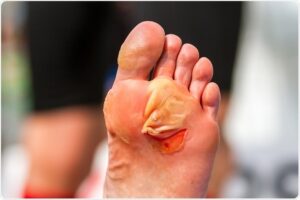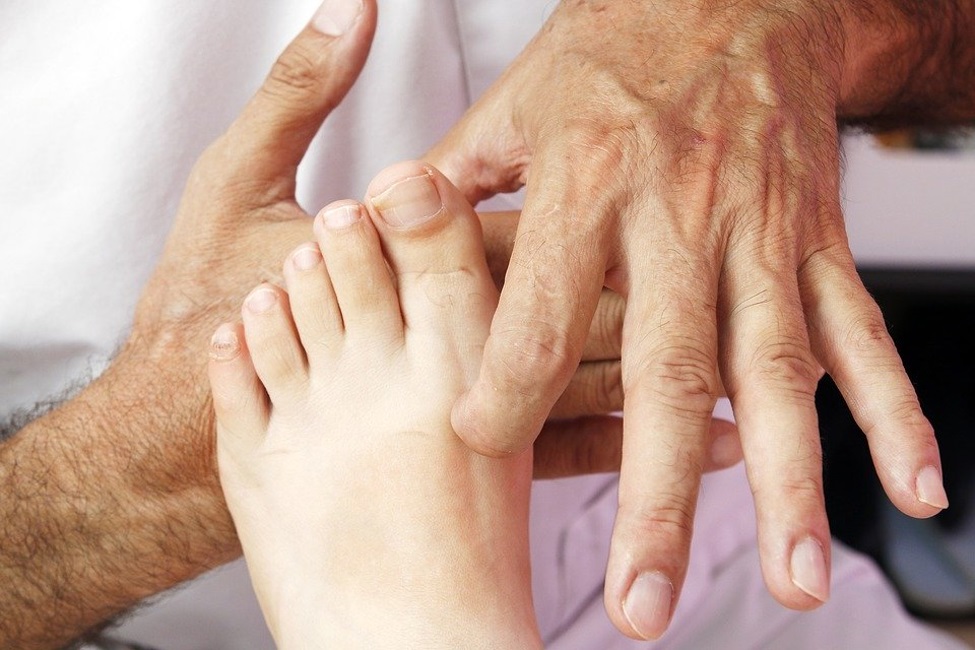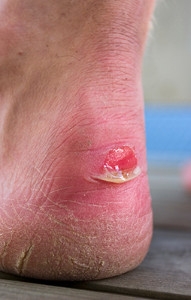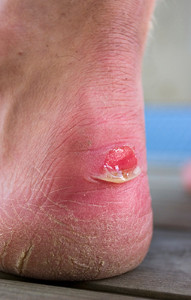 A blister forms in between layers of skin, the fluid fills the space. When hiking, you experience blisters on feet because of the repeated rubbing against the skin. Many hikers have come to accept that after a walk, you must experience some foot pain from friction blisters. However, did you know that blister care can prevent blisters from hiking?
A blister forms in between layers of skin, the fluid fills the space. When hiking, you experience blisters on feet because of the repeated rubbing against the skin. Many hikers have come to accept that after a walk, you must experience some foot pain from friction blisters. However, did you know that blister care can prevent blisters from hiking?

How do obesity and diabetes impact the feet? Foot health trends are demanding significant changes in foot health services globally and a lot of orthotic materials are designed for multifaceted foot conditions. The issues driving the demand of specific foot care are; the increase of people with diabetes and those who are obese. They have a characteristic of foot health issues that need pressure-relieving orthotic materials and wider-fit footwear. Diabetes and being overweight are amongst the main issues, leaving the population susceptible to diabetes. If you are looking for some expert advice on diabetic foot care, you may want to seek help from a Houston foot specialist. Feel free to contact our office to make an appointment for your diabetic foot problems. Our foot and ankle specialist, Dr. Ejodamen Shobowale can provide you with the care you need to keep you pain-free and on your feet

Obesity
The World Health Organization defines obesity and overweight as excessive fat that impairs health. Obesity is when the body mass index (BMI) is greater than or equal to 30 but when it is greater or equal to 25 you are overweight. This is caused by an energy imbalance between consumption of high energy food and low outflow due to decreased physical activity. Obesity is effectively addressed when you focus on physical activity and nutrition. One of the consequences of obesity is it leads to diabetes and different foot health issues.
The body increases in size, fat and mass distribution on the abdomen and truck. This limits balance and stability; the foot shape and size increase in width and depth. The feet motion changes when standing and walking. Overweight individuals walk slower as a result of reduced stride length and double support needed for the body. The posture is different at the trunk because joint angles in gait in ankle joint prolong the plantar flexion and increase abduction at the everted heel and the hip
Foot health proposed solutions increase foot stability to maintain physical activity that will raise the burning of energy to reduce weight. There is a great association between obesity and diabetes because of increased BMI and waist measurements.
Diabetes
Diabetes is commonly caused by the increase to decrease of blood sugar leading to changes in the body. This leads to long-term complications of macro-vascular problems which sometimes lead to amputations. Fifty percent of diabetic patients who have suffered for more than 20 years have an affected nerve function which stiffens the plantar soft tissue. There are specific changes in the lower limbs and feet leading to foot deformities. There is an increase in callous formation, diabetic blister, and diabetic foot ulceration due to increased pressure to the forefoot. There is reduced walking speed, tremor, and greater stance widths. The footpads lose elasticity and thicken causing the metatarsal head to be exposed to glucose, which can cause diabetic foot infection. This reduces the capability of shock absorption of the feet.
It is estimated only 20% of diabetic patients wear correct fitting footwear. Suitable footwear distributes pressure from body weight evenly and prevents foot ulceration. Custom molded insoles reduce plantar pressure when walking and standing.
These specific user needs for diabetes foot, call for specialized foot care from a podiatrist and investment in proper footwear. If you have any questions, please feel free to contact our office located in Houston, TX. Our diabetic foot care specialist can handle all of your foot and ankle issues. We will provide you with the latest diagnostic and treatment methods for all foot related issues



A blister is typically caused by excessive friction that occurs on a portion of the foot. It is a result of torn skin that is covered by a bubble which is filled with liquid. It is the body’s natural defense mechanism that protects the raw skin as the healing process occurs. One of the reasons why a blister can develop may be from wearing shoes that do not fit correctly. If there is a narrow toe area or if the heel area is too wide, blisters may begin to form. They can develop on different parts of the foot, including the side of the pinky toe, or on the bottom of the toes. If medical conditions exist such as hammer toes or bunions, blisters may form as the skin rubs against the shoe. If you have blisters that are uncomfortable and painful, it is suggested to counsel with a podiatrist who can discuss proper preventative measures.
Blisters may appear as a single bubble or in a cluster. They can cause a lot of pain and may be filled with pus, blood, or watery serum. If your feet are hurting, contact Dr.Eji Shobowale of DeNiel Foot & Ankle Center. Our doctor can provide the care you need to keep you pain-free and on your feet.
Foot Blisters
Foot blisters are often the result of friction. This happens due to the constant rubbing from shoes, which can lead to pain.
What Are Foot Blisters?
A foot blister is a small fluid-filled pocket that forms on the upper-most layer of the skin. Blisters are filled with clear fluid and can lead to blood drainage or pus if the area becomes infected.
Symptoms
(Blister symptoms may vary depending on what is causing them)
- Bubble of skin filled with fluid
- Redness
- Moderate to severe pain
- Itching
Prevention & Treatment
In order to prevent blisters, you should be sure to wear comfortable shoes with socks that cushion your feet and absorb sweat. Breaking a blister open may increase your chances of developing an infection. However, if your blister breaks, you should wash the area with soap and water immediately and then apply a bandage to the affected area. If your blisters cause severe pain it is important that you call your podiatrist right away.
If you have any questions, please feel free to contact our office located in Cypress, TX. We offer the newest diagnostic and treatment technologies for all your foot care needs.
Read more about Blisters